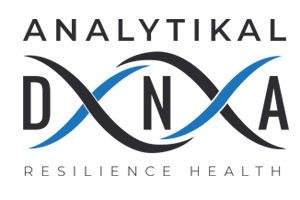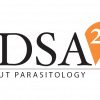Description
Comprehensive Stool Analysis for Optimal Clinical Utility
What is the Comprehensive Digestive Stool Analysis™ (CDSA 2.0)?
The Comprehensive Digestive Stool Analysis 2.0™ (CDSA 2.0) is an advanced stool test that provides immediate, actionable clinical information for the management of gastrointestinal health. Utilizing cutting-edge technologies and biomarkers, this test offers valuable insight into digestive function, intestinal inflammation, and the intestinal microbiome.
The biomarkers from the CDSA 2.0 Profile are reported using the DIG framework, providing key clinical information for three main gastrointestinal functional areas:
- Digestion/Absorption:
- Pancreatic Elastase-1 is a marker of exocrine pancreatic function.
- Putrefactive Short–Chain Fatty Acids (SCFAs) are markers of undigested protein reaching the colon.
- Inflammation/Immunology:
- Calprotectin is a marker of neutrophil-driven inflammation. Produced in abundance at sites of inflammation, this biomarker has been proven clinically useful in differentiating between Inflammatory Bowel Disease (IBD) and Irritable Bowel Syndrome (IBS).1,2
- Eosinophil Protein X is a marker of eosinophil-driven inflammation and allergic response.
- Gut Microbiome:
- Metabolic indicators demonstrate specific and vital metabolic functions performed by the microbiota. These include:
- Beneficial Short–Chain Fatty Acids (SCFA), including n–Butyrate, are fermentation products produced by bacterial action on fiber and resistant starch. N-butyrate is the primary fuel source for colonocytes.
- pH is influenced by macronutrient composition, bacterial populations, and transit time.
- Beta-glucuronidase is an enzyme produced by bacteria that relates to the metabolism and detoxification of certain substances.
- Secondary Bile Acids, including Lithocholic Acid (LCA) and Deoxycholic Acid (DCA), and the LCA/DCA ratio, assess the bacterial conversion of primary bile acids into secondary bile acids.
- Bacteria and mycology cultures demonstrate the presence of specific beneficial and pathogenic organisms.
- Bacteria and mycology sensitivities are provided for pathogenic or potentially pathogenic organisms that have been cultured. The report includes effective prescriptive and natural agents.
- Parasitology
- CDSA 2.0 provides microscopic fecal specimen examination for ova and parasites (O&P), the gold standard of diagnosis for many parasites.
- Enzyme immunoassay (EIA), widely recognized for its diagnostic utility in the detection of pathogenic antigens, is used for the identification of Cryptosporidium, Entamoeba histolytica, and Giardia lamblia.
- CDSA 2.0 is also available without parasitology.
- Metabolic indicators demonstrate specific and vital metabolic functions performed by the microbiota. These include:
- Additional Biomarkers Available:
- Campylobacter
- Clostridium difficile
- Escherichia coli
- Helicobacter pylori
- Macroscopic Exam for Worms
- KOH Preparation for Yeast
- Occult blood
- Fecal Fat
- Chymotrypsin
- Zonulin Family Peptide
- SCFA distribution
When should the CDSA 2.0 be considered?
The CDSA 2.0 Profile can reveal important information about the root cause of many common gastrointestinal symptoms such as gas, bloating, indigestion, abdominal pain, diarrhea, and constipation. This stool analysis utilizes biomarkers such as Calprotectin to differentiate between Inflammatory Bowel Disease (IBD) and Irritable Bowel Syndrome (IBS).1,2 In addition, Genova’s CDSA 2.0 test can be used to evaluate patients with a clinical history that suggests a gastrointestinal infection or dysbiosis.
What advantage does the CDSA 2.0 offer compared to other diagnostics?
A structured fecal biomarker panel offers the advantage of assessing multiple functional areas that may be contributing to symptoms. For example, diarrhea could stem from multiple causes including pancreatic exocrine insufficiency, inflammation, food allergies, or the presence of a pathogenic or potentially pathogenic organism. A positive result on one or more fecal biomarker tests may guide therapy, either by suggesting a treatable alternative diagnosis or by eliminating a diagnosis from further consideration. The latter allows individualized targeted treatment to be redirected to more likely diagnoses.3,4
CDSA 2.0 represents the best technical platform to assess gut health, including Matrix Assisted Laser Desorption Ionization Time-of-Flight Mass Spectrometry (MALDI-TOF MS) technology for cultivable species identification, as well as stool-based biomarkers for gastrointestinal diagnostics.
What can clinicians and patients expect from CDSA 2.0 testing?
The CDSA 2.0 Profile biomarkers provide comprehensive information for the development of strategic interventions. Symptoms often improve as identified functional imbalances and inadequacies become normalized through targeted dietary, lifestyle, and supplementation therapeutics.



